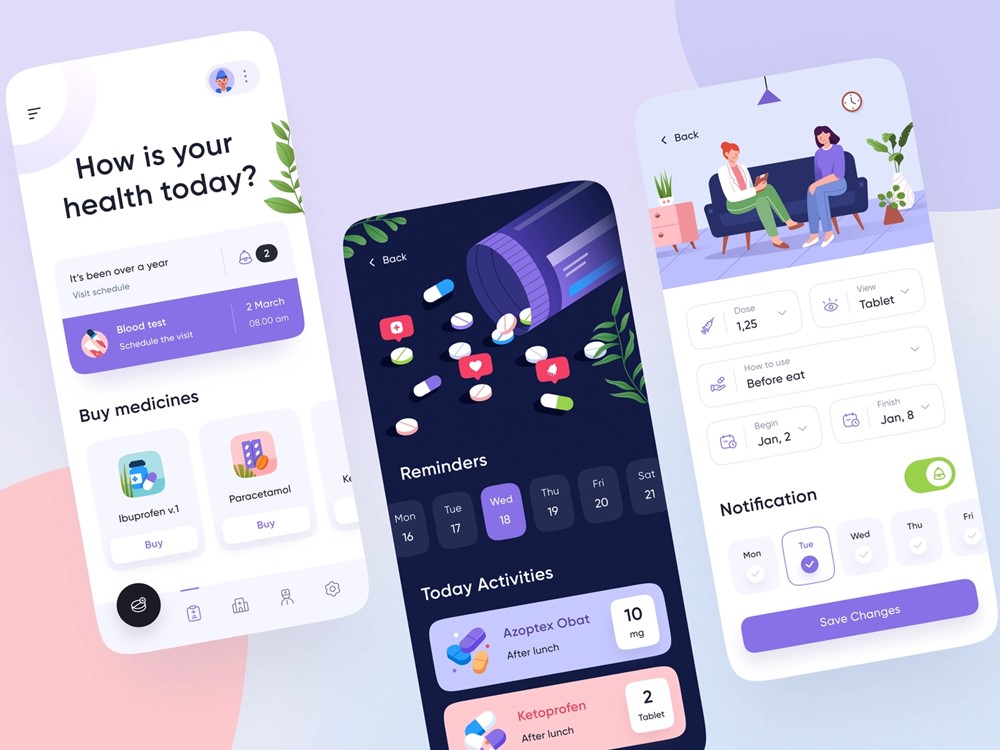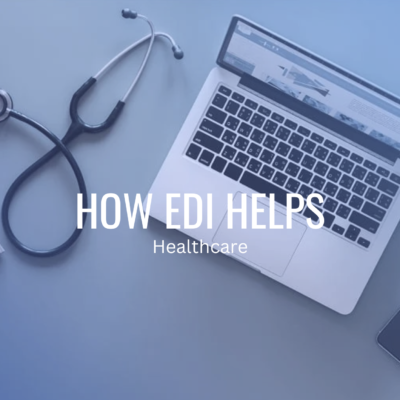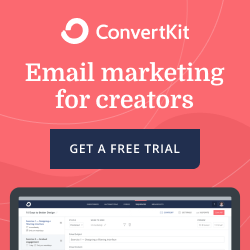
How to Develop a FemTech App? A Detailed Guide
The increase in digital health solutions has changed how women take care of themselves. This encourages them to be proactive about their health and make well-informed decisions. Apps designed for women’s health, known as FemTech apps, are becoming essential for tracking menstrual cycles, managing diseases, tracking pregnancies, and more.
Entrepreneurs and investors see the huge potential in FemTech, leading to more money being invested and new ideas being developed in this field. According to Statista, FemTech products and services were worth about $40.2 billion worldwide in 2020. It’s projected to grow to over $75 billion by 2025, showing a big increase in demand for FemTech globally.
As women’s healthcare technology keeps improving, apps made for women are set to change how healthcare is delivered to women around the world.
This blog will help you understand different parts of FemTech app development, like the steps, types, features, and costs involved.
Types of FemTech Apps Businesses Can Consider Developing
In today’s fast-paced market, staying profitable means using innovative technology. Let’s explore important FemTech Apps that help businesses improve profitability by making women’s healthcare easier.
- Menstrual Cycle Trackers: These apps help women track their menstrual cycles, predict ovulation and fertility, and understand hormonal changes and symptoms throughout the month.
- Pregnancy and Fertility Apps: Designed for women trying to get pregnant or already pregnant, these apps offer tools for tracking fertility, managing prenatal care, monitoring fetal development, and providing educational resources.
- Pelvic Floor Training Apps: These apps assist women in strengthening their pelvic floor muscles, which helps prevent and manage pelvic floor disorders like urinary incontinence and pelvic organ prolapse.
- Wellness and Fitness Apps: These apps provide workout routines, nutrition plans, meditation sessions, and health-tracking features to help women reach their health and fitness goals.
- Breast Health Monitoring Apps: These apps help women perform regular breast self-exams, track changes in breast tissue, receive reminders for clinical breast exams and mammograms, and access educational resources on breast health and cancer prevention.
- Menopause Management Apps: These apps offer support and resources for women going through menopause, including symptom tracking, personalized advice, guidance on hormone therapy, and lifestyle recommendations.
- Birth Control Apps: These apps help women track their menstrual cycles, monitor fertility, and manage birth control methods, offering personalized insights and reminders for contraceptive use.
- Cancer Diagnosis Apps: These apps provide symptom tracking, risk assessment tools, access to educational resources, and support networks for individuals affected by cancer.
- Mothers’ Community Apps: These apps create virtual communities for mothers to connect, share experiences, and access support and advice on pregnancy, childbirth, breastfeeding, and parenting.
- Sexual Wellness Apps: These apps promote sexual health and well-being by offering information on sexual education, contraception methods, STI prevention, sexual pleasure, and intimacy enhancement, encouraging open communication and empowerment around sexual health.
While these are some major types of FemTech apps, let’s now look at some real examples of such applications.
Real-World Examples of FemTech Apps
Let’s see how businesses are using FemTech apps to provide personalized services, understand women’s health patterns, and improve customer engagement and loyalty.
- Flo: Flo is a popular app for tracking menstrual cycles. Users can monitor their periods, track symptoms, predict ovulation, and manage reproductive health. It gives personalized insights and health tips based on user data.
- Clue: Clue is another menstrual tracking app. Users can track periods, symptoms, moods, and sexual activity. It predicts the start of the next menstrual cycle accurately and provides educational content on women’s health.
- Peloton: Known for fitness equipment and online workouts, Peloton also offers classes for women’s health, including prenatal and postnatal workouts, pregnancy strength training, and pelvic floor exercises.
- MyFitnessPal: MyFitnessPal is a health and fitness app that lets users track diet, exercise, and weight loss goals. It’s beneficial for women’s health with features like calorie tracking, meal planning, and nutritional analysis.
- Glow: Glow focuses on fertility tracking, period prediction, and ovulation monitoring. It also provides community support and expert advice to help women understand their menstrual cycles, optimize fertility, and achieve reproductive goals.
The FemTech App Development Process
Now that we’ve explored real-world examples of FemTech and its use of technology, let’s dive into a detailed step-by-step guide for building a FemTech app, ensuring a smooth journey from idea to deployment.
- Market Research: Understand your target audience’s needs, preferences, and challenges. Analyze existing competitors to identify strengths and weaknesses.
- Define Objectives and Features: Clearly outline the goals of your FemTech app and the features it will offer. Consider including features like menstrual tracking, fertility monitoring, health education resources, telemedicine services, and community support forums.
- Design User Interface: Create a user-friendly interface that appeals to your target audience. Focus on a seamless user experience (UX) with intuitive navigation.
- Choose Technology Stack: Select the appropriate technologies and frameworks for app development, considering scalability, security, and compatibility with different devices and operating systems.
- Develop Backend: Build the backend infrastructure to handle data storage, user authentication, and communication with external APIs. Implement robust security measures to protect user data.
- Develop Frontend: Design and develop the frontend of your app, focusing on user interface design and functionality. Implement interactive features and personalized recommendations.
- Integrate Features: Integrate planned features into your app, ensuring smooth functionality and performance. Thoroughly test each feature for bugs or issues.
- Regulatory Compliance: Ensure compliance with relevant regulations such as HIPAA and GDPR, especially if handling sensitive health data. Implement measures to protect user privacy and comply with data protection laws.
- Testing: Conduct comprehensive testing to ensure your app works correctly across devices, screen sizes, and operating systems. Test for usability, performance, security, and compatibility.
- Launch: Prepare for the app launch by creating marketing materials and generating buzz through social media and press releases. Reach out to potential users and partners to build anticipation.
- Post-Launch Support: Provide ongoing support and maintenance for your app, including bug fixes, updates, and new feature releases. Collect user feedback to improve the user experience in future iterations.
Essential Features to Integrate during FemTech App Development
Let’s explore some important features to consider while developing FemTech apps. Each feature plays a crucial role in creating a comprehensive solution tailored to the diverse needs of women in managing their overall well-being and health.
- Health Tracking: Empowers users to monitor their wellness journey, track progress, and make informed decisions for improved health outcomes.
- Menstrual Tracking: Provides detailed monitoring of menstrual cycles, including period start and end dates, flow intensity, and associated symptoms.
- Telemedicine Services: Integrates telemedicine capabilities, allowing users to conveniently seek medical advice and guidance through remote consultations with healthcare professionals.
- Symptom Management: Tracks and manages symptoms related to reproductive health conditions such as PCOS, endometriosis, or menopause.
- Educational Resources: Provides access to educational materials covering various aspects of women’s health, including articles, videos, and expert advice.
- Community Support: Incorporates community features like forums or social networking tools, facilitating user interaction, experience sharing, and peer support.
- Fertility Tracking: Includes tools for predicting fertile windows, monitoring ovulation, and assisting in family planning or conception efforts.
- Integration with Wearable Devices: Ensures compatibility with wearable gadgets like smartwatches or fitness trackers to synchronize data seamlessly and enhance tracking accuracy.
- Medication Reminders: Offers functionality to set medication reminders and monitor medication usage, particularly beneficial for users managing birth control or hormone therapy.
- Security and Privacy: Safeguards user data and ensures compliance with data protection regulations such as GDPR by implementing robust security measures.
How Expensive is It to Make a FemTech App?
Making a custom FemTech app can cost anywhere between $20,000 to over $200,000 on average. The final price can change a lot based on different things like how complex the app is, what it can do, which devices it’s for (like iPhones or Androids or both), how detailed the design is, and how skilled the team making it is.
Factors Influencing FemTech App Development Costs
The cost of developing FemTech software is influenced by several key factors. Let’s break them down to understand how they impact the overall expenses.
- App Type Complexity: Different types of FemTech apps, such as period trackers, breastfeeding aids, or telemedicine platforms, vary in complexity. More features mean higher development costs due to the need for advanced algorithms and user interfaces.
- UI/UX Strategy Investment: Investing wisely in user interface and experience design is crucial for user satisfaction. It enhances the app’s appeal and contributes to its long-term success.
- Platform Choice: Choosing between iOS, Android, or both affects development costs. Each platform has its requirements, which influence coding, testing, and ongoing maintenance expenses.
- Team Composition: The size and expertise of the development team impact costs. Larger teams with diverse skills may speed up development but also increase expenses.
- Development Team Location: The location of the development team affects costs, with regions like the US or Western Europe typically charging higher rates compared to Eastern Europe or Asia.
- Testing and Quality Assurance: Thorough testing and quality assurance procedures are essential but can increase expenses. However, they help ensure functionality, security, and compliance, reducing risks post-launch.
- Integration of Technological Advancements: Incorporating advanced technologies like AI or blockchain can enhance app functionality but may require additional expertise and resources, affecting the budget.
- GDPR Compliance Impact: Adhering to data protection regulations, such as GDPR, adds extra costs for implementing data encryption and robust security measures.
Understanding these factors is crucial for businesses aiming to develop FemTech apps. It helps in effective budget planning and ensures the success of the project.
Effective Monetization Strategies for FemTech Apps
To sustain innovation and enhance user experiences, businesses employ various revenue-generating approaches through app development.
Telemedicine Services: By integrating telemedicine or virtual consultation services, businesses can charge users for appointments with healthcare professionals, creating a reliable income stream directly from consultations.
Subscription Models: Offering subscription-based access to premium features, content, or services within the app allows for consistent revenue generation and fosters long-term relationships with subscribers.
In-App Purchases: Providing users with the option to buy additional features, content, or virtual goods within the app contributes to incremental revenue growth for the business.
Freemium Model: Offering a free basic version of the app with limited features and providing the option to upgrade to a premium version generates revenue through premium upgrades, ensuring a steady income stream.
Sponsored Content or Partnerships: Collaborating with relevant brands or influencers to create sponsored content or promotional campaigns within the app generates revenue through sponsored placements or endorsements, providing an additional income stream for the business.
Driving FemTech Innovation: Gsquare’s Development Expertise
At Gsquare, we are dedicated to driving innovation in the FemTech sector. With our profound experience in women’s healthcare software development, we empower FemTech startups and enterprises to bring their pioneering ideas to life. Recognizing the unique dynamics of FemTech, we work closely with our clients to create advanced solutions that redefine women’s health and wellness.
From crafting intuitive interfaces to building robust backend systems, we tailor every aspect of the development process for scalability, security, and exceptional user experiences.
Reach out to us today to develop innovative apps that enhance engagement and elevate user experiences.







